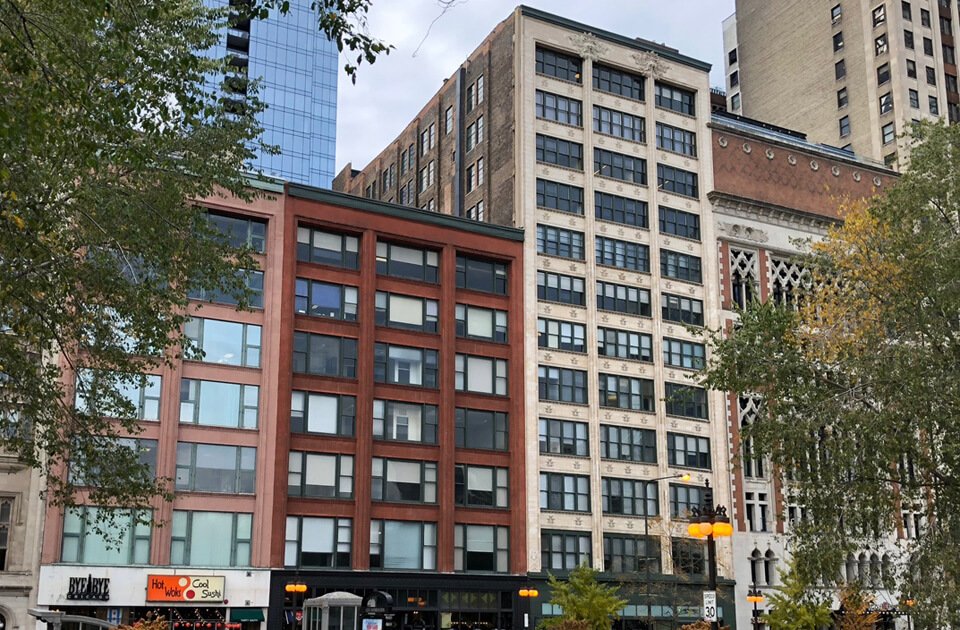Keith and Gage Buildings
Private

Keith and Gage Buildings
18-24 South Michigan Avenue
Chicago, IL 60603
Built
1898
Original Architect
Holabird & Roche, Louis Sullivan
Restoration Architect
Mary Brush, Klein & Hoffman
Category
Private
Landmark
National Register of History Places
Michigan Boulevard National Historic District
Building History
The buildings at 18-24 South Michigan Avenue are 2/3 of the buildings known as the Ascher, Keith, and Gage Buildings designed in 1898 by Holabird & Roche with a Louis Sullivan facade on the Gage building. In 1906 the owner of Gage building retained the architects to add four floors which required the removal of the ornate cornice, construction of the addition, and re-installation of the cornice with Sullivan embellishment. The buildings are local and national landmarks and part of the Michigan Boulevard National Historic District. The facade of Gage building is also held in easement by Landmarks Illinois.
Preservation and Building Pathology Challenges
In 2001 the owners retained Klein and Hoffman, Inc. to perform the city mandated 100% facade examination. Mary Brush performed the examination and designed the facade restoration. Special attention was paid to the north bay of the Sullivan facade due to the visibly apparent foundation and corner settlement of the northeast corner. The windows had previously been replaced to accommodate the 12″ slope, and the terra cotta was extensively cracked throughout the bay.
Design Solution
Ms. Brush determined that despite the settlement, the structural steel and riveted connections were sound. The terra cotta that was damaged beyond repair was replicated to match the existing units. Previous cleaning applications damaged the glaze to a matte finish. The replacement units match the current condition of clean terra cotta. The tight joints between units required precise setting of the units to maintain joint size as well as to accommodate the slope of the building. The remaining facades of the building received replacement thermally broken industrial windows to match the existing.
The brilliance of Louis Sullivan’s detailing was so apparent in the window sills. Where the typical treatment at a window sill extension beyond the primary wall plane might include a drip edge, his is highly ornamented. It is a three-dimensional surface that the pedestrian sees when looking up at a building. Mary Brush’s true fascination with details such as these that were designed by the original architect for the pure enjoyment of observation are what sets Mary apart for her skills in the restoration of existing buildings.
